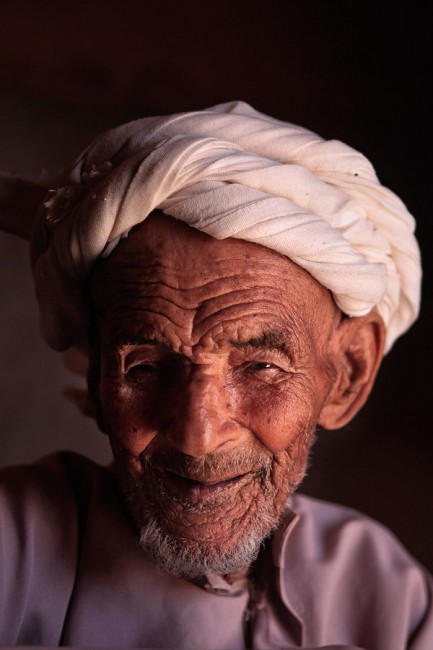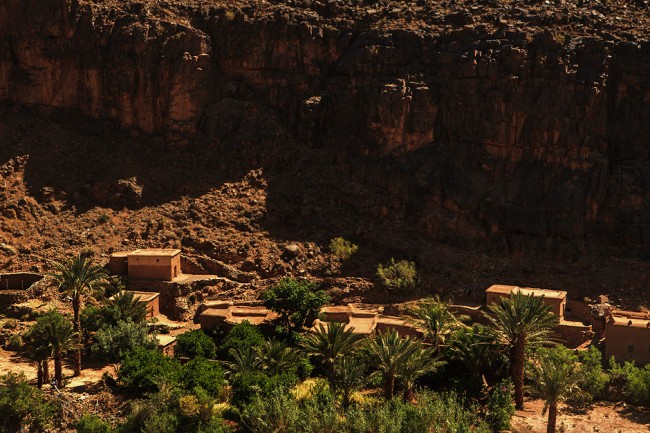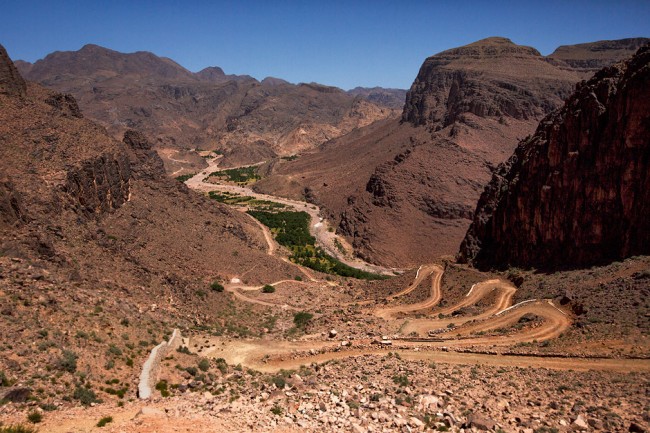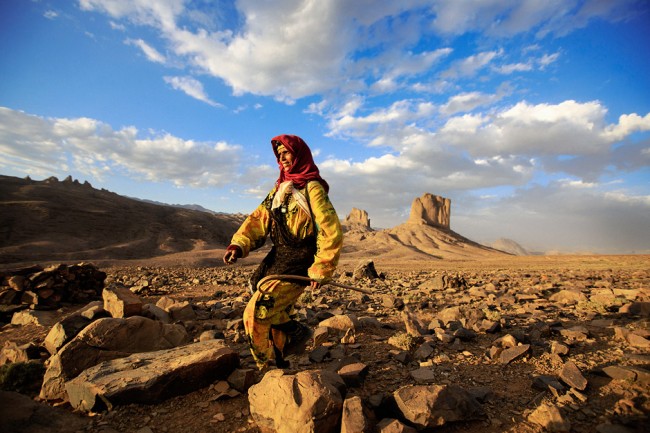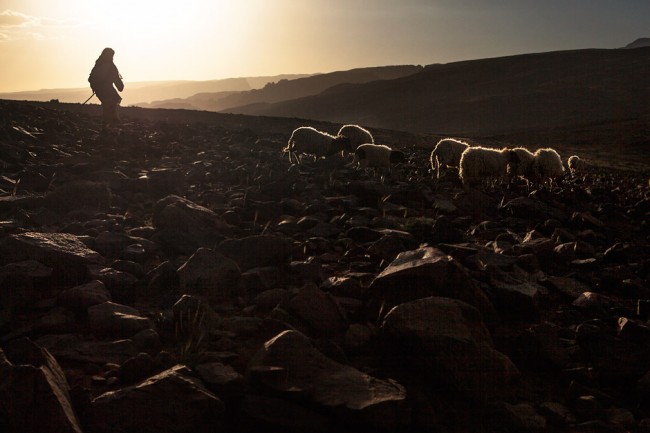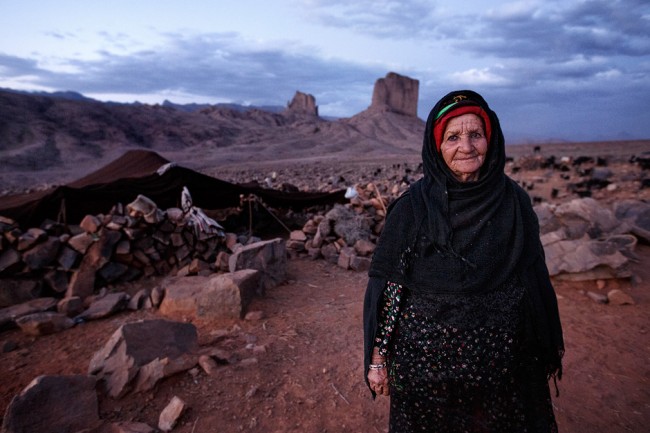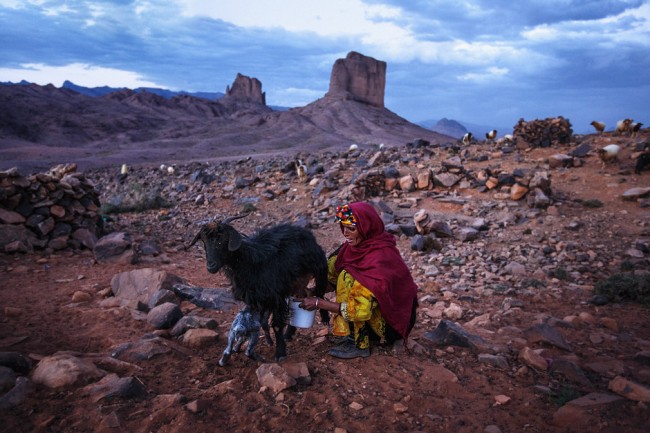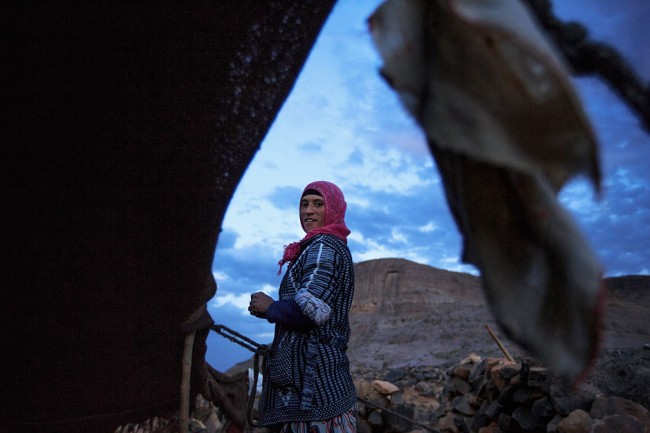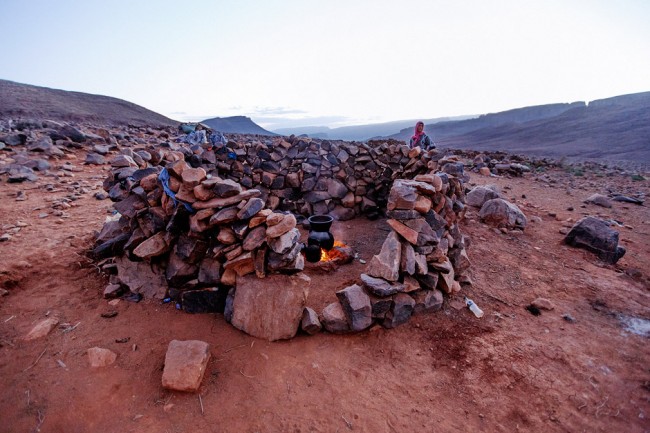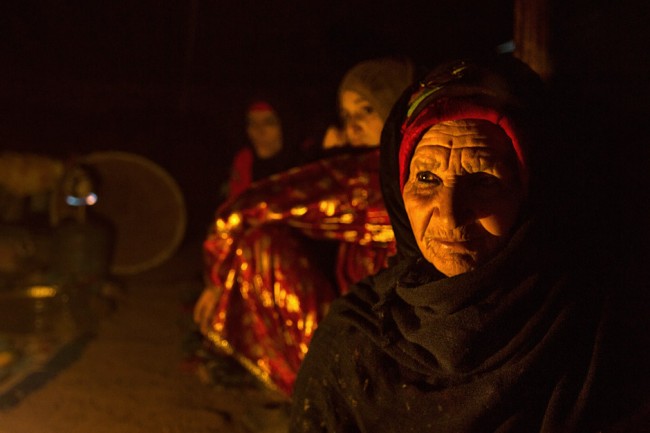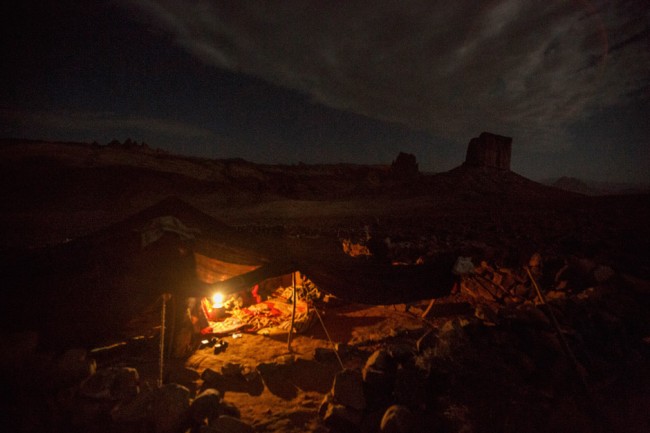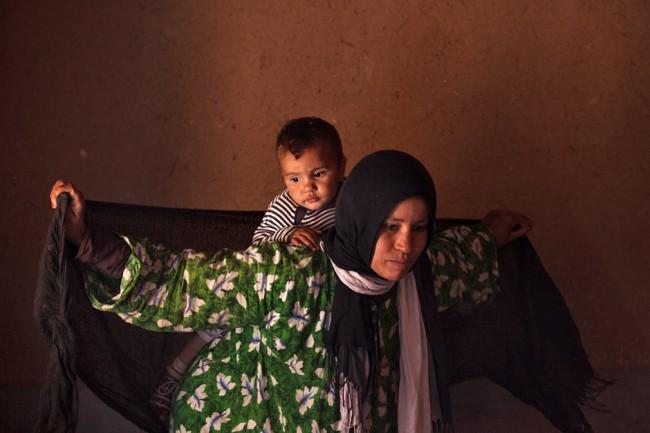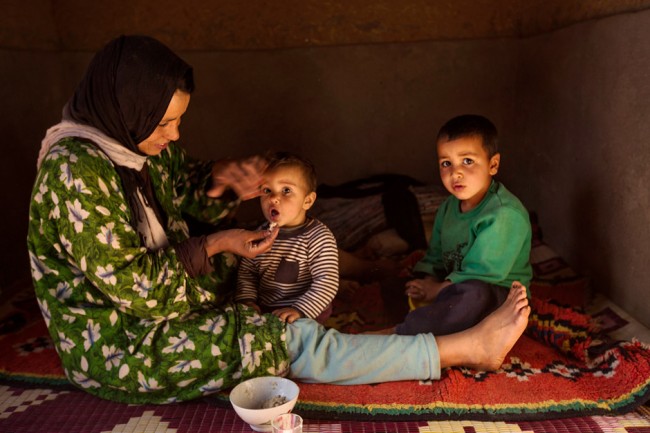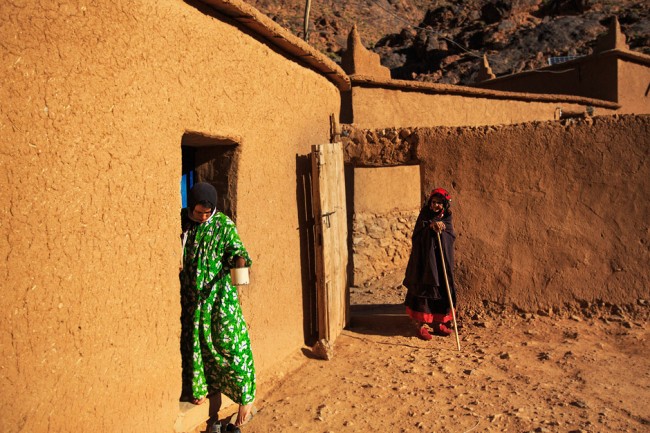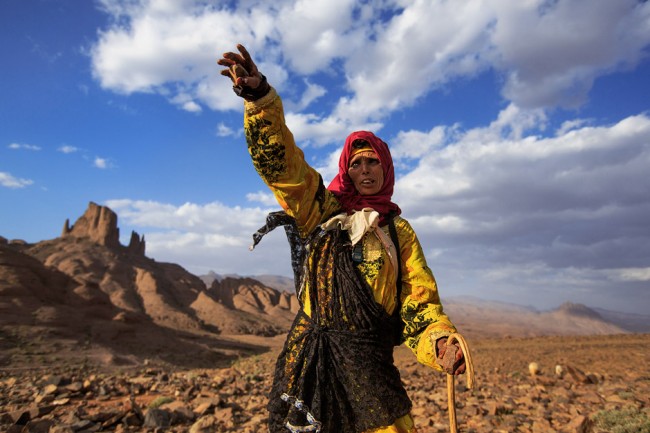 A month in Morocco and I feel that I am only scratching the surface, but finally starting to understand how some things work here. After being greeted by pleasantly easy going places free of hassle and annoying characters in the early goings, we eventually made it to the "other" part of the country.
A month in Morocco and I feel that I am only scratching the surface, but finally starting to understand how some things work here. After being greeted by pleasantly easy going places free of hassle and annoying characters in the early goings, we eventually made it to the "other" part of the country.
In general, I'm not particularly bothered by the hassle any more. I've seen it all before, sometimes much worse. Nowadays, just as the hustlers size me up and see what they can get out of me, I am sizing them up and seeing what's the funniest answer to give them or how to put them into a dead end, where they can't ask any more stupid questions that inevitably lead to an invite to their friend's shop, taking a tour on a camel with their cousin or just guilt-tripping me to give them some money.
I don't find the hassle so frustrating any more, just a little sad that for a lot of the people, that's all they'll see, and, they'll go off disappointed, thinking that all that the Moroccans want to do it rip them off. This, as I've already found out is far from the truth, but, I can't blame anybody who has gone along the main tourist circuit (which is pretty big) for thinking otherwise.
What is somewhat frustrating, but, at the same time understandable is the fact that people, at least in these same, tourist-frequented areas have a real aversion to photography. No idea how it started. Religion would be too simple of an explanation. I've been to a few muslim countries before where the people were quite fine with having their photos taken. It is obviously cultural, but, what part of the culture is responsible, I still have no idea. The really frustrating part is that, I've seen an incredible amount of photogenic characters. I can however fully understand that none of them are there for my amusement, so, you smile to yourself and say "If only!" :)
With this frustration hanging over me, we hired a guide, to help smooth the way, as we went on a short trip to the Saghro mountains. I guess this post in some sense is an honest account of how things went. How important it is to have a great guide as the bridge between you and the people you're photographing. Things definitely didn't go to my plan, but, I got some images anyhow.
Note: I don't have the names of the people I photographed, Tyler wrote them down and he had to leave for a family matter. And so, though I prefer to refer to the people in my photos by their names (when possible) I'll refer to them in accordance to their relation to Mohamed, our guide.
We started off the trip with a visit to Mohamed's grandfather. The man is 102 years old and, of course, he has countless stories. The people of the area mostly belong to the Ait Atta tribe, though they are more commonly known as Berber (which actually means Barbarians, obviously not a very nice term). The grandfather was a real free spirited dude in his youth. He never followed Islam, questioning whether his Arab conquerors knew the truth about God, never wanted to bow down to anybody and once shot a French soldier in the arm. Because the soldier was young, he nursed him back, telling him to go home. Tyler, my friend and travel companion over the past few months will have much more on this in the coming weeks.
On the same day we headed towards the mountains, passing little valleys and mini-oases. I had never really seen oases before Morocco, and, I have to say, they really impress me.
The roads were… winding, as you can see. With the Landrover 110 having such a large turning angle, I didn't quite fit in a few times and had to back up in order to make the turn.
As we reached Mohamed's friend's settlement, we were told that a couple of nomadic families, of which there are very, very few at this time in the Saghro mountains, had set up their camp a few kilometres away. We headed in the direction and after parking the car at the last drivable point, walked for half an hour through the valley. Eventually we found a woman herding her animals. After a few minutes of chatting, Mohamed asked if I could photograph her. She said that I could and we could come to drink tea and have food with them, if we tipped her.
I have somewhat of a dilemma tipping someone if I'm simply documenting what they're doing. I don't like giving money in direct exchange for photos in those situations. Yes, I am a professional photographer and yes, I might make money from those images, but, in those cases it doesn't feel right. I'd rather pass. It's a personal thing. I usually prefer to photograph in situations where I am wanted around. Here, things were different. We spent all the time to get there and all the money on the guide and, she obviously didn’t care much for my "greater" purpose of documenting her culture.
The woman, being a nomad was in survival mode, she was an opportunist. Without dressing this up and sugar-coating it, to some extent, so am I. I was looking for an opportunity to make a photo, she, to make some cash. Fair enough, let's make a deal. Not the romantic idea of traveling the world, befriending locals and photographing them that I've been living out for most of the past decade, but, I can adapt.
She hopped around the rocky landscape with the agility of a mountain goat. I found it pretty hard to photograph her and to keep up at the same time. The surroundings were spectacular, the light was golden - a temporary "Photographic Nirvana" of sorts.
At the camp of the nomads we realised that there were only women around, which, I had thought generally meant that we wouldn't really be allowed to photograph. With the men away however, the matriarch of the family, the woman's mother ran the show. She turned out to be a distant relative of Mohamed and recognised him immediately. This was good news. I was allowed to keep photographing and we were instantly sat down for tea.
The life of the nomads is pretty standard for people who live in close contact with nature and their animals. They live off of them and time their activities with sunrise and sunset. The milking of goats usually happens in the beginning and at the end of the day.
One of the granddaughters of the matriarch seals the tent walls with carpets and rags lying about.
The kitchen is a circle of rocks that shields the fire and prevents the animals from wondering in.
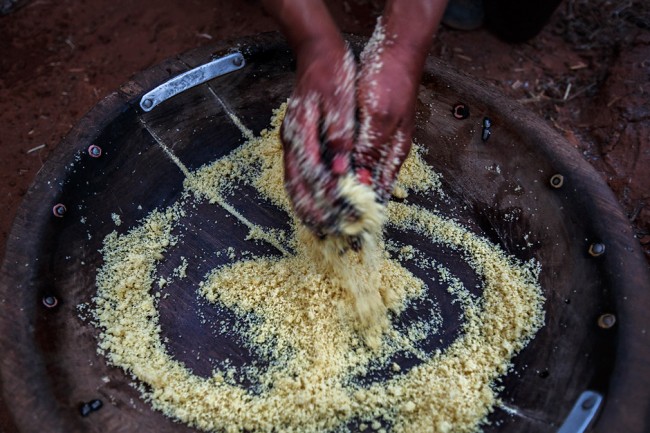 The night's dish was couscous. I hadn't tried couscous in Morocco before this point. A pretty special first occasion.
The night's dish was couscous. I hadn't tried couscous in Morocco before this point. A pretty special first occasion.
As the sun set, we chatted. Unfortunately there wasn't that much chatting between Tyler and us and the nomad women. I don't know whether this was because of the gender barrier or whether Mohamed simply didn't care much for translating. I like to be "a fly on the wall" in such situations and kept making the occasional exposures during the evening.
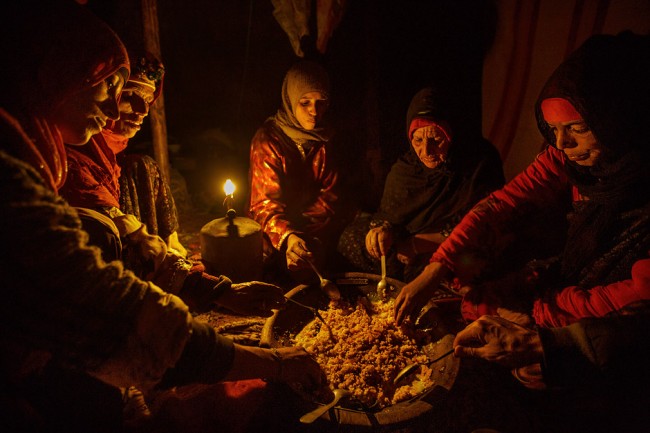 Eventually the couscous came out. The locals usually eat with hands, but, for the foreign guests, spoons were brought out.
Eventually the couscous came out. The locals usually eat with hands, but, for the foreign guests, spoons were brought out.
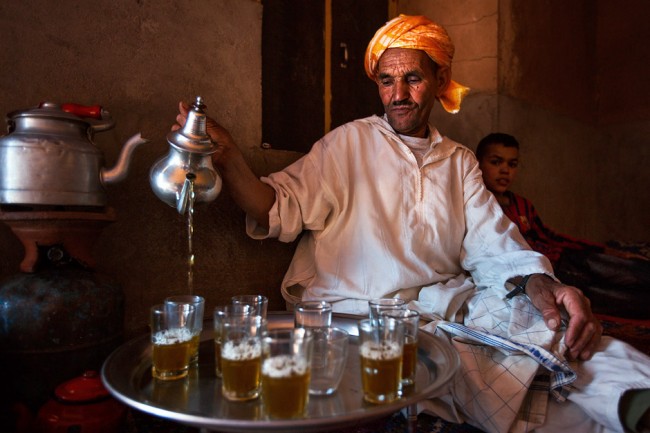 The next day we headed off to Mohamed's uncle's house in another small valley of Saghro mountains. Tea is the essential way to greet guests. Here, uncle prepares the tea and his grandson (a very nice boy) served it to us.
The next day we headed off to Mohamed's uncle's house in another small valley of Saghro mountains. Tea is the essential way to greet guests. Here, uncle prepares the tea and his grandson (a very nice boy) served it to us.
One of Mohamed's cousins, Hedda and her youngest child, daughter Bouchra.
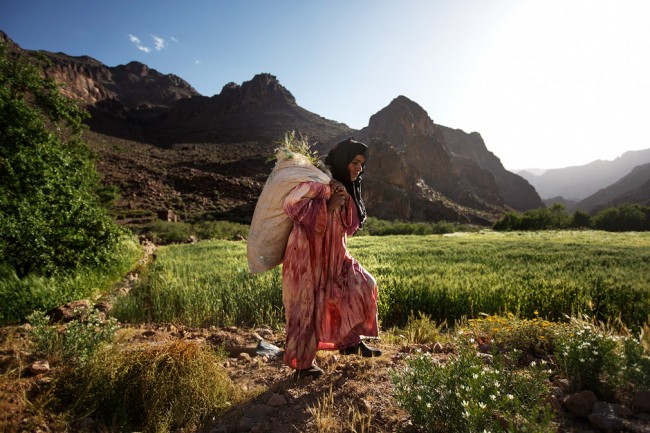 Mohamed's aunt gathering plants to feed the animals. A gender barrier issue came up in photographing her. I guess my purpose was not explained well enough by the guide, so, she felt quite weird with me photographing her over extended period of time. She hadn't been out of the village and her understanding of the world was shaped by that. She thought that I kept photographing her face, which of course, I wasn't. I was just trying to capture the right moment, where the hills would align in the way they are here.
Mohamed's aunt gathering plants to feed the animals. A gender barrier issue came up in photographing her. I guess my purpose was not explained well enough by the guide, so, she felt quite weird with me photographing her over extended period of time. She hadn't been out of the village and her understanding of the world was shaped by that. She thought that I kept photographing her face, which of course, I wasn't. I was just trying to capture the right moment, where the hills would align in the way they are here.
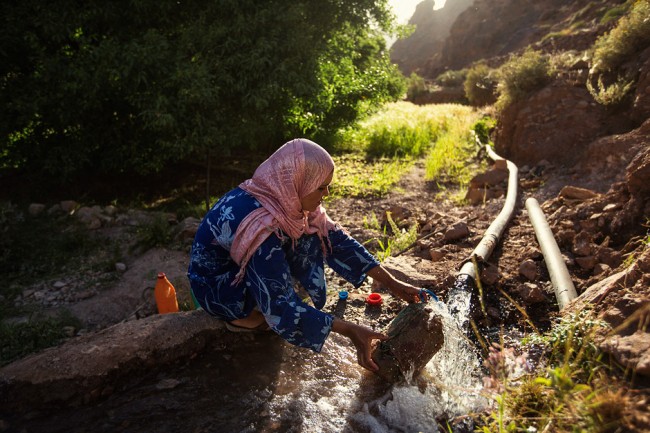 Mohamed's other cousin was collecting water, which these days comes from a stream generated by a pump.
Mohamed's other cousin was collecting water, which these days comes from a stream generated by a pump.
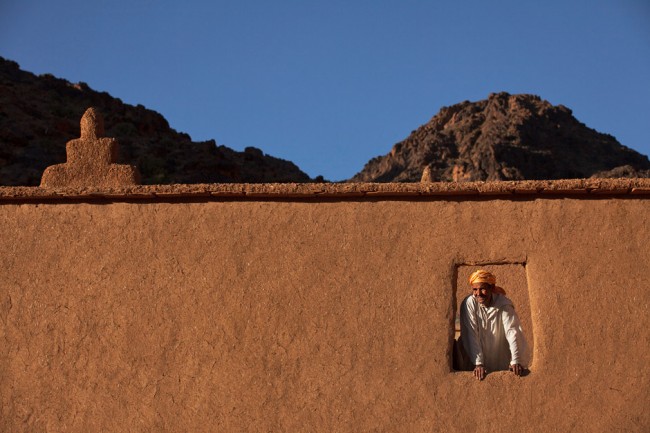 Uncle looks out of his traditional house, keeping an eye over things.
Uncle looks out of his traditional house, keeping an eye over things.
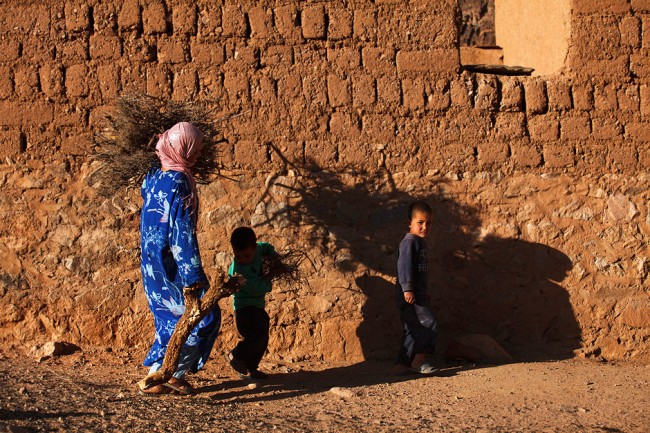 As the family prepares for dinner, firewood is gathered and brought into the kitchen.
As the family prepares for dinner, firewood is gathered and brought into the kitchen.
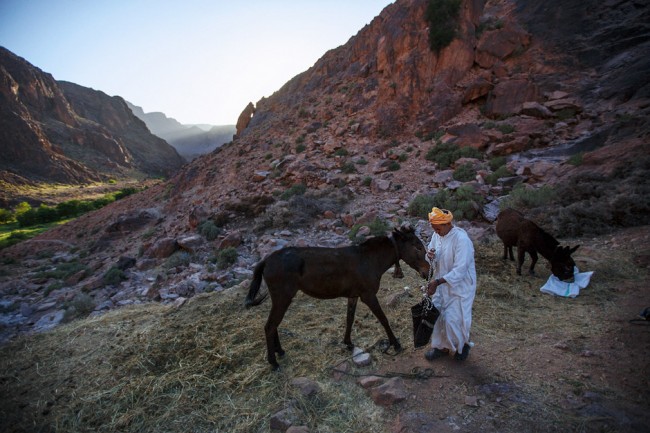 Mohamed's uncle giving food to his horse. He was quite proud of it.
Mohamed's uncle giving food to his horse. He was quite proud of it.
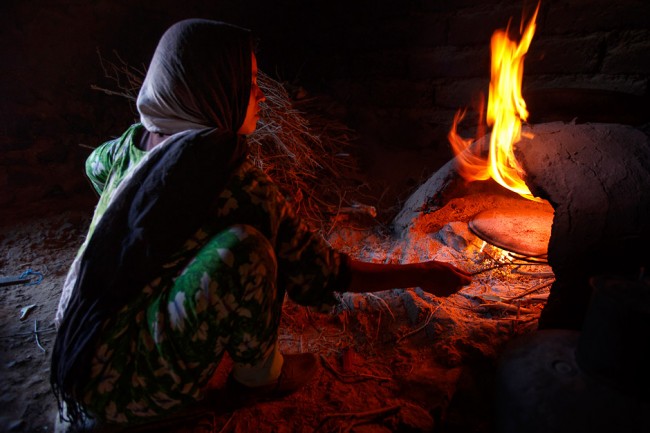 Hedda cooking bread. Delicious stuff, quite different from the standard type you get in the restaurants.
Hedda cooking bread. Delicious stuff, quite different from the standard type you get in the restaurants.
Hedda feeding her children. A child that doesn't ask for a Bon-Bon, pen or whatever other crap passing by tourists like to hand out to children is to me, an unspoilt, normal child. A child that freaks out at the sight of a foreigner is an indication that the place is very seldom visited by tourists. This was the case here. The kids only started to come around and gained confidence towards the end of our stay.
The traditional mud and stone houses in which most of the people in the Saghro mountains still live are very photogenic. Having people walk through them, makes them even more photogenic. I hung around and got a few images of that. Here Mohamed's grandmother wonders around the compound while Hedda takes the dishes out to wash.
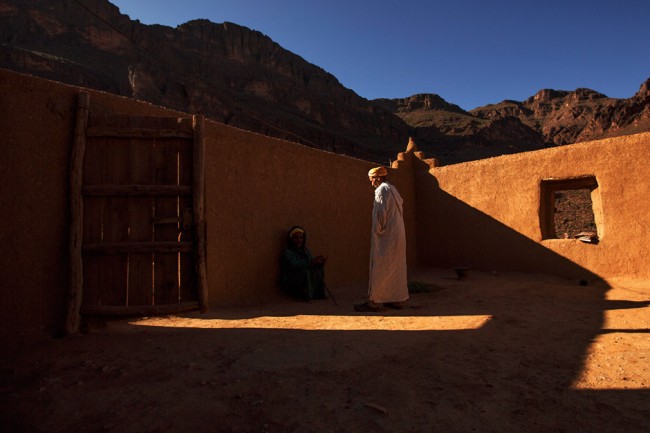 Uncle speaking to one of his cousins, who visited on the night of our visit too.
Uncle speaking to one of his cousins, who visited on the night of our visit too.
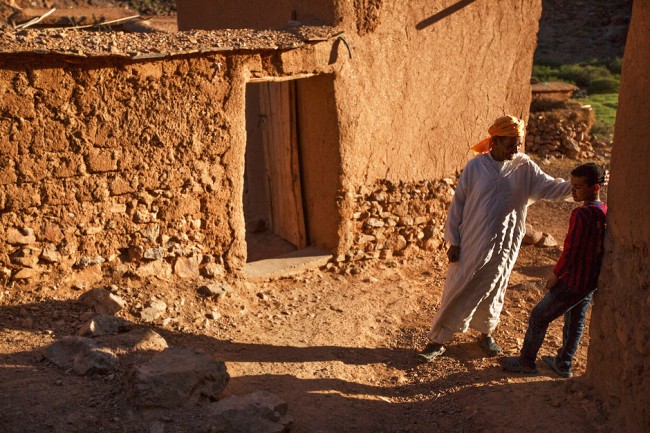 One of uncle's grandsons was a particularly pleasant young man of about 11-12. Very polite, always smiling and always willing to help his grandfather. The kids in the more remote parts of the mountains are different to the ones standing along the roads asking for stuff, they're actually doing chores, helping their parents.
One of uncle's grandsons was a particularly pleasant young man of about 11-12. Very polite, always smiling and always willing to help his grandfather. The kids in the more remote parts of the mountains are different to the ones standing along the roads asking for stuff, they're actually doing chores, helping their parents.
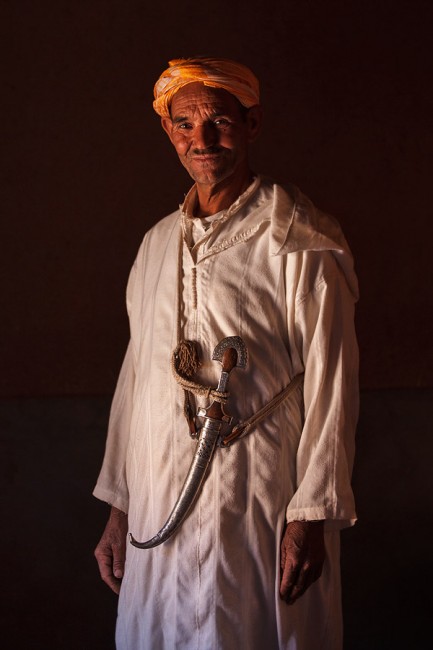 Mohamed's uncle decided to show us a knife that has been in the family for over one hundred years. It was made for them by the Jewish craftsmen of which, back in the day there were many in Morocco. He was very proud of this family relic and I decided to take his portrait with it.
Mohamed's uncle decided to show us a knife that has been in the family for over one hundred years. It was made for them by the Jewish craftsmen of which, back in the day there were many in Morocco. He was very proud of this family relic and I decided to take his portrait with it.
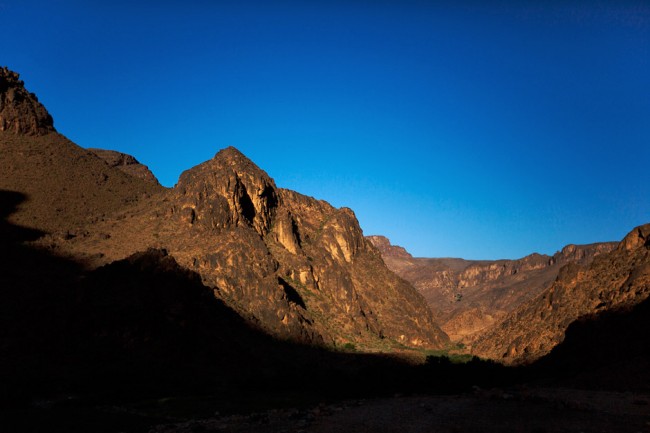 The quietly spectacular valley, where the house stands. Mohamed's family has chosen the area not to be bothered by the outside world - roads, cars and temptations of modernity.
The quietly spectacular valley, where the house stands. Mohamed's family has chosen the area not to be bothered by the outside world - roads, cars and temptations of modernity.
I think I've been very lucky to meet some of the people who became my guides over the years. My dear friend Hardik in India, Zemenfes in Ethiopia and some other friends who accompanied me for shorter periods really understood what I was after. I would like to believe that I am not simply consuming the culture, not just passing by, taking photos along the way. That's the way I felt on my short visit to the mountains. I don't yet know what the reason for this was. I was definitely not on exactly the same page as my guide.
I like to chat, to tell about myself, my world, my family. We did only bits and pieces of that. This is what's frustrated me most so far. Even if I don't get the images, I love to experience people and with me, liking to talk, language is a big part. I could of course attempt to learn Moroccan Arabic, but, the people in remote places don't use it so much. In any case, I'll keep looking, no longer for guides, perhaps for photographers or adventure seekers who can speak the language and want to join (hint-hint to anyone who fits the criteria :) )

